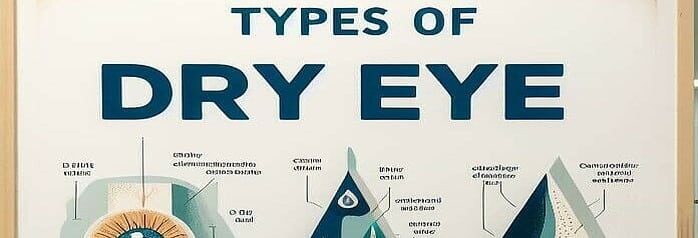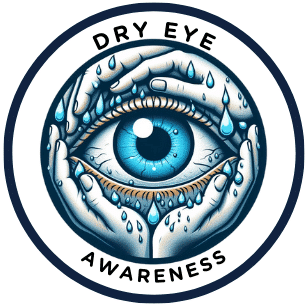
Dry Eye Syndrome, often swept aside as a minor nuisance, is a condition that strikes millions globally. I am here to explain what it really entails and why understanding it matters. It’s characterized by a persistent dryness or discomfort in the eyes, and it’s far more common than most imagine.
The symptoms vary widely, from a gritty sensation in the eyes to more severe pain or blurred vision. For those who endure it, Dry Eye Syndrome can be a relentless hindrance, affecting tasks as simple as reading or using a computer.
Perhaps the biggest misconception about Dry Eye Syndrome is that it’s a mere inconvenience. But without proper management, it can lead to more serious complications, including damage to the eye’s surface. This underscores the need for both awareness and proactive treatment.
Recognizing the condition’s complexity is crucial. It’s not just about feeling discomfort; it’s about the underlying causes and effects that bring about these sensations. That’s why it’s important to understand the different types of Dry Eye Syndrome, which I will detail next. Their distinct characteristics inform tailored treatment approaches, which can substantially improve a sufferer’s quality of life.
The Different Faces of Dry Eye: Classifying the Condition
Dry Eye Syndrome isn’t a one-size-fits-all condition. In fact, understanding the types of Dry Eye can be key in getting the right treatment. Primarily, it’s categorized into two main types: Evaporative Dry Eye and Aqueous Deficient Dry Eye.
In Evaporative Dry Eye, the most common form, the meibomian glands don’t produce enough oil, leading to the rapid evaporation of tears. This can result from Meibomian Gland Dysfunction (MGD), which affects a significant portion of those with Dry Eye.
On the flip side, Aqueous Deficient Dry Eye will occur when the lacrimal glands fail to produce a sufficient amount of the watery component of tears. Conditions such as Sjogren’s Syndrome, where the immune system attacks the glands, can lead to this type.
Environmental factors, from blustery winds to arid office air, can exacerbate any type of Dry Eye. And it’s not just the outside world; inside factors like staring at screens for long periods or dehydration from not drinking enough water also play a part.
Then there’s the role of diet and lifestyle. Diets rich in omega-3 fatty acids and frequent eye breaks during screen time may help mitigate symptoms, while smoking and certain medications can increase the risk of Dry Eye Syndrome.
Educating yourself about these classifications is more than academic—it’s practical. The type of Dry Eye Syndrome I’m dealing with will influence the choice of treatment. And that’s where accurate diagnosis comes in, which is what we’ll explore in the next section.
Navigating Through the Symptoms: Identifying Your Type of Dry Eye
Diagnosing Dry Eye Syndrome accurately is crucial. You can’t tackle a problem without knowing exactly what you’re up against.
Eye care professionals use several tools to assess Dry Eye Syndrome. From questionnaires that gauge symptom frequency and severity to clinical tests like tear breakup time or Schirmer’s test, which measure the quality and quantity of your tear film.
Understanding your symptoms is the first step in identification.
Do your eyes feel gritty as though there’s sand in them? Or is it a stinging sensation that plagues you? The nature of discomfort can steer the diagnosis.
A correct diagnosis ensures the right treatment. For instance, treatments that are effective for Evaporative Dry Eye may not work as well for Aqueous Deficient Dry Eye because the underlying causes are different.
Real people, real symptoms – let’s talk about them. Case studies reflect the diversity of Dry Eye conditions and highlight the importance of personalized treatment plans.
Effective Management Strategies for Different Types of Dry Eye
No one-size-fits-all solution exists for managing Dry Eye Syndrome, but understanding the specific type you’re dealing with is the first step in finding relief. Treatments are highly individualized and can range from over-the-counter eye drops to professional procedures tailored to address the underlying causes of your condition.
For those dealing with Meibomian Gland Dysfunction, warm compresses and eyelid massages may help, in addition to medical therapies. On the other hand, Aqueous Deficient Dry Eye often requires a different approach, potentially including prescription medications to stimulate tear production or punctal plugs to prevent tear drainage.
Incorporating lifestyle adjustments, such as taking regular breaks during screen time, ensuring adequate hydration, and modifying the diet to include omega-3 fatty acids, can also provide symptomatic relief.
As research advances, new therapies are continually emerging, offering hope for even better management of Dry Eye Syndrome in the future. Collaborating closely with an eye care professional ensures you receive the most up-to-date treatment plan.
Remember, managing Dry Eye Syndrome is not about quick fixes; it’s about creating a sustainable, holistic strategy that addresses your unique needs. While the journey to alleviate symptoms may be challenging, it is worth the effort to protect your vision and improve your quality of life.

